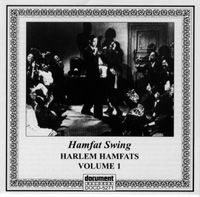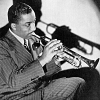Home » Jazz Musicians » Harlem Hamfats
Harlem Hamfats
Led by Morand and Joe McCoy, the main songwriters, the group initially provided instrumental backing to Williams' stable of artists, including Frankie "Half Pint" Jaxon, Rosetta Howard, and Johnny Temple. They were perhaps the first example of a studio recording band becoming an act in their own right and recorded extensively. Their first major hits were "Oh! Red" recorded in April 1936, and "Let's Get Drunk And Truck" (originally recorded by Tampa Red), recorded in August of the same year. "Oh! Red" was popular enough to be covered by Count Basie, The Ink Spots, Blind Willie McTell and, later, Howlin' Wolf.
Some of their other recordings, such as "We Gonna Pitch A Boogie Woogie" more clearly presage the later rhythms of rock and roll. Their most recognizable work may be the modern jazz tune "Why Don't You Do Right?" which was written by Joe McCoy and included on their 1936 record under the title "The Weed Smoker's Dream." The song had numerous drug references. The lyrics were later changed and the tune refined. Lil Green recorded it as "Why Don't You Do Right", a tune about a conniving mistress and her broke lover, in 1941, and it was later recorded by Peggy Lee with the Benny Goodman Orchestra.
By 1939, singer Morand had returned to New Orleans, and changing fashions had made their sound less commercially attractive. The Harlem Hamfats were not thought to be the most innovative group of the time, and many of the band's original works dealt heavily with sex, drugs and alcohol, which may have hindered their music from being more widely available. However, as a small group playing entertaining music primarily for dancing they are considered an important contributor to 1930s jazz, and their early riff-based style would help pave the way for Louis Jordan's small group sound a few years later, rhythm and blues, and later rock and roll.
Tags
Music
Recordings: As Leader | As Sideperson






















